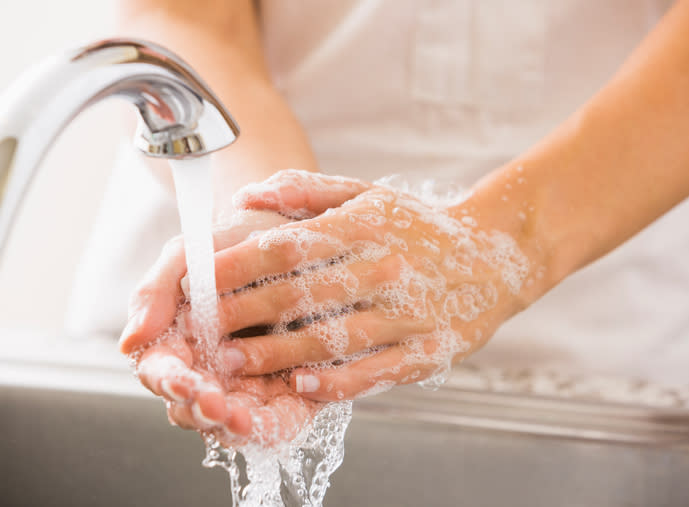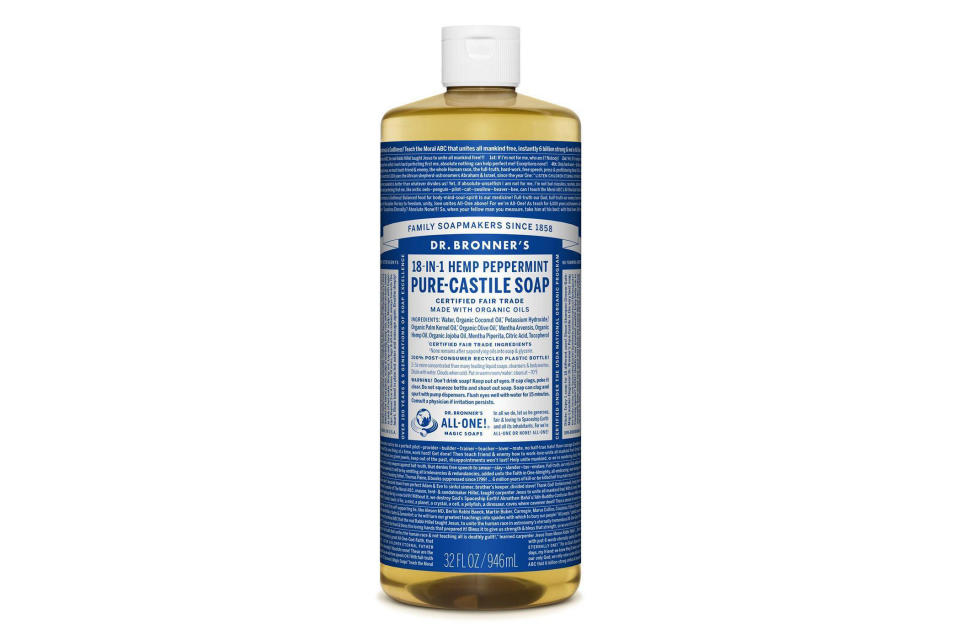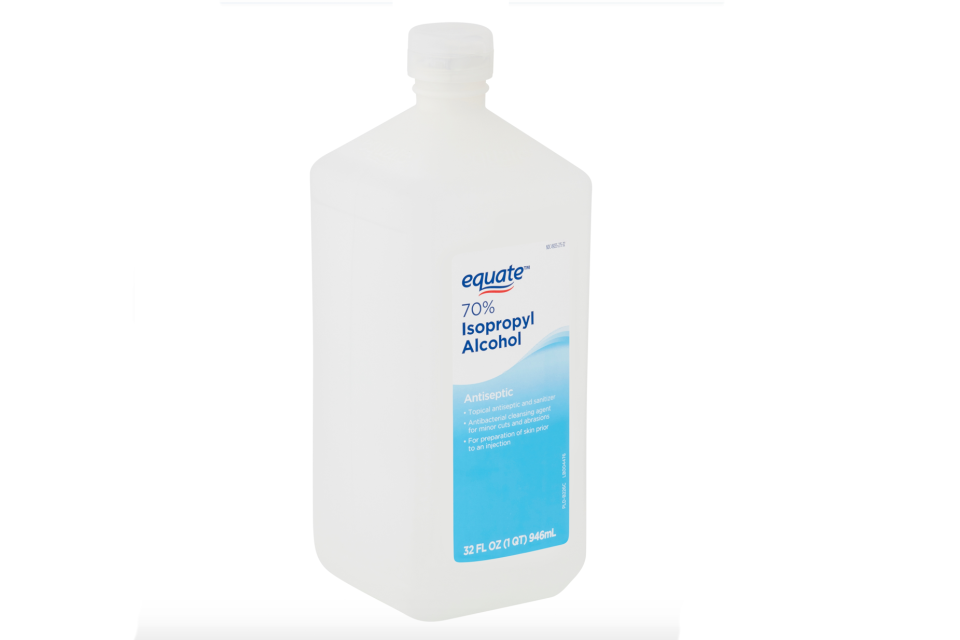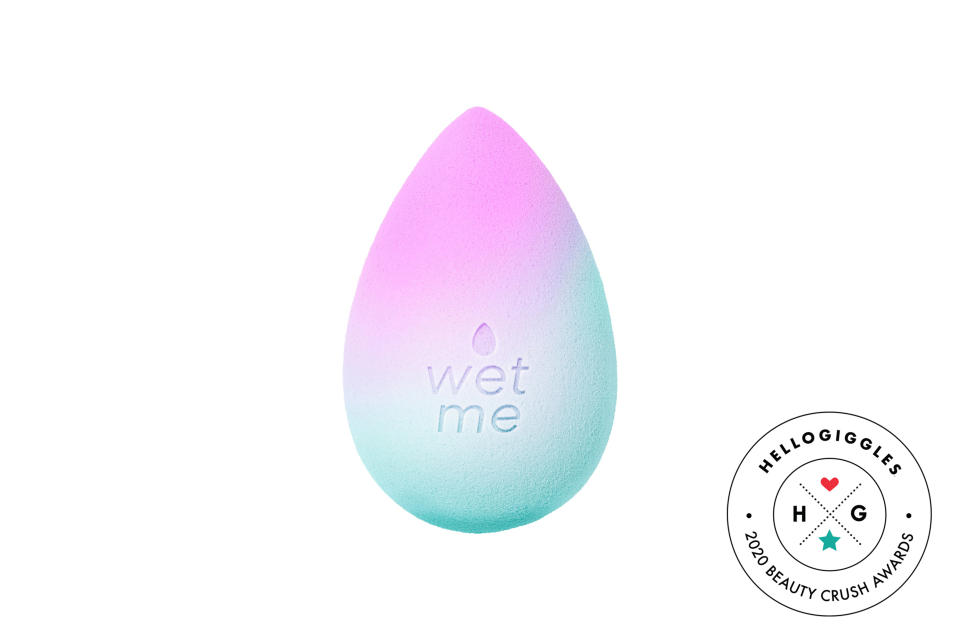Germs can live on your makeup, so here's how to sanitize your products
Social distancing lends itself well to the deep spring cleaning we’ve all been meaning to get around to but have found reasons to avoid, up until now. While we all do our part to avoid spreading coronavirus (COVID-19) by staying home, there’s no better time to clean the house. As you tidy up around your space, disinfecting surfaces and deep-cleaning your carpets, now is also the perfect time to clean your makeup products.
Makeup can carry bacteria the same way any other surface can, so regular cleanings are important for preventing the spread of germs.
No one knows this more than makeup artists who work on hundreds of faces per year using the same makeup products—which means their sanitation practices have to be on par with their makeup skills. “Proper sanitation should be the first and most important lesson for every makeup artist,” says Van Khai Truong, a makeup artist based in New York City. “We have to constantly educate ourselves on how to properly keep our tools and products clean before, during, and after each application.”
Makeup artists are the authority on all things cosmetic sanitation. Their work depends on it. They often invest thousands of dollars into their makeup kits and work close to their clients, so proper hygiene is essential to protect themselves, their tools, and the rest of their clients.
Below are a few ways experts say you can keep your makeup sanitized and germ-free.
1Wash your hands before doing your makeup.

This seems like a no-brainer, but washing your hands before doing your makeup can dramatically reduce the spread of germs. If you’re prone to acne, this simple step could help decrease the breakouts on your skin. When makeup artists are working on multiple people in a day, they wash their hands before and after each application to prevent any cross-contamination. Incorporating this quick and easy step into your daily routine is just good hygiene, like washing your hands before cooking a meal. If you don’t have access to a sink, use a hand sanitizer.
2Deep-clean your makeup brushes with soap and water.
Common wisdom says you should be washing your makeup brushes every two to three weeks, or more often if you’re prone to breakouts. You don’t need to use fancy brush soap—good old-fashioned soap and water are just as effective. If it’s good enough to stop the spread of the coronavirus, it’s good enough to clean your makeup brushes. Many makeup artists recommend Dr. Bronner’s Pure-Castile Liquid Soap, baby soap, or dishwashing liquid, but use whatever you have on hand. Lather the bristles, rinse, and repeat until the water runs clear and there’s no more soap in the bristles. Lay flat to dry overnight.

3Sanitize makeup packaging and powders with 70% isopropyl alcohol.
If you’ve never properly cleaned your makeup before, your makeup bag likely has more germs than a bowl of candy on Halloween. To disinfect, decant 70% isopropyl alcohol into a reusable spray bottle. The percentage is important because anything in a higher percentage evaporates too quickly to properly disinfect. Open your powder products—like powder foundations, blushes, bronzers, and eyeshadows—and spray until the entire pan is evenly saturated. Leave products open until the alcohol evaporates, and then spray the outside packaging to disinfect. You can also do the same thing with any of your wooden pencils, like eyeliners and lipliners, and tools like eyelash curlers and brush handles. Don’t worry: The 70% isopropyl alcohol doesn’t disrupt or change the formula of any of your products. Once the alcohol evaporates (it shouldn’t take longer than five to 10 minutes), your products are sanitized and ready to use.

4Avoid double-dipping into creams and liquid products.
Avoid applying products directly from their packaging to your face. When you do, you’re putting the germs from your face onto the product, and then repeating that over and over again with new germs. Instead, swipe the amount of product you think you’ll need on the back of your (clean) hand, and then apply it on your face with your fingers or a brush. This goes for concealer wands, cream blushes, bronzers, and eyeshadows. Creams can’t be sanitized the way that powder products can, so the best way to ward off the spread of bacteria is to prevent it from happening in the first place.
Makeup artists typically decant or scrape off cream or liquid products onto a stainless steel palette and work off that to avoid any cross-contamination, but for personal use, the back of your hand works just fine. Bacteria also breaks down products faster, so avoiding double-dipping in your makeup routine will make your products last longer.
5Toss the sponges and powder puffs that come included with your face products.
Those sponges that come with face powder aren’t individually packaged like other sponges, so you can’t be sure they’re clean the first time you use them. Each sponge can be loaded with bacteria after just one use, and putting it back into that small container is like creating a tropical oasis for bacteria to multiply. You’re better off touching up with a small brush or sponge and washing it every two to three weeks.

6Be aware of expiration dates.
Did you know that all makeup has an expiration date? It’s printed on the back of all makeup packaging. Look for a picture of a tiny, open jar: Inside the jar is a number that states how many months the product is good for. The general rule of thumb: The more moisture a product has, or the closer it is to your eyes, the shorter the lifespan.
Mascara and liquid eyeliner should be tossed and replaced most often at every three months, liquid foundation and concealers every six to 12 months, cream blushes and lipsticks every 12-18 months, and powders every two years. Powders can last longer if you properly disinfect them regularly, using the advice outlined above. When all else fails, always trust your nose. If a product smells off, toss it.
7Wash (and replace) your makeup sponges regularly.
Makeup artists never use the same sponge on multiple people because sponges are the perfect vehicle for spreading bacteria. For personal use, sponges are a great tool for applying liquids and creams and doing touch-ups but, like your kitchen sponges, they need to be washed and replaced regularly.
Deep-clean your makeup sponge with soap and water at least once a week, and toss it after one to three months of regular use. (If you’re prone to breakouts, avoid using makeup sponges altogether.) After using or washing your sponge, don’t stuff it back into your makeup bag and zip it shut. Instead, leave it out to dry completely before enclosing it in a small space like your makeup bag. Bacteria on a wet sponge will multiply faster when trapped inside a bag without any airflow.

